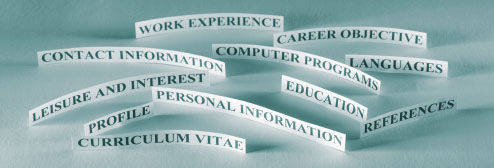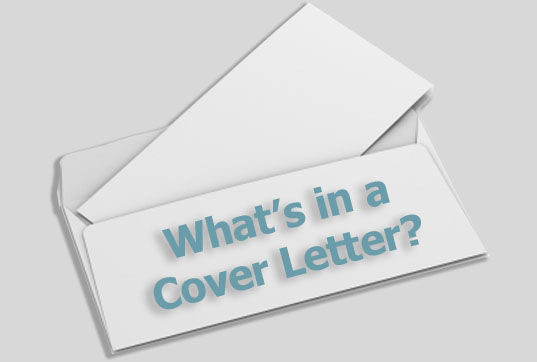
By Carrie Myers
You know the expression: You only get one chance to make a first impression. In today’s fast-paced, technology-driven world, landing your dream job can be challenging—especially since your first impression is most likely going to be made on a piece of paper or through a computer screen.
“Employers are often overwhelmed with the increasing volume of applicants per job posting,” explains Laura Lintz, a certified professional resume writer and assistant director of career services at Cedarville University in Cedarville, Ohio. “For this reason, an employer will spend on average, only six seconds per resume. This is your first chance to represent yourself. Every line of the resume needs to be relevant to the position. The resume is what will buy you the interview.”
Susan Wall, M.A.Ed., a business consultant and instructional designer based in Lisbon, N.H., agrees. “Your resume is the first real impression you get to make on a potential employer. A strong resume that summarizes your experience, expertise and how you fit with the employer is going to get you in the door and give you an opportunity to really sell your skills.
“Weak resumes that don’t tell the employer what’s in it for them, or resumes that are sloppy with poor formatting and typos, poor grammar and lack of action verbs are going to be tossed in the circular.”
"[In person] it takes only three to five seconds to make a first impression, but it can take a whole career to undo it.”
—Dana May Casperson, author of Power Etiquette: What You Don't Know Can Kill Your Career
The Nuts and Bolts
It used to be a complete faux pas to have your resume go over one page. Today, however, employers are a little more forgiving on this aspect, as long as everything in your resume relates to the position you’re applying for.
“We recommend one page 95 percent of the time,” states Will Russell, cofounder of ReadyRez.com, a website that provides the tools to help you design your resume. “Usually it goes longer than one page if the employer is asking for something specific that makes your resumetwo pages.”
“If you have held several jobs…have extensive accomplishments, or have been in your professional career for at least five years, a two-page resume may be more readily accepted,” explains Lintz.
Wall feels that limiting yourself to a one-page resume may mean you’re selling yourself short. “You want to be sure you included everything that is relevant,” she says. “Even those who are new to the workforce have a wealth of skills and experience that can be included in a resume. You may not have a lot of jobs under your belt, so think about all the skills the job you want requires, and then detail how you’ve acquired those skills through your activities and projects.”

Additional Sections of a resume May Include…
- Research
- Publications
- Professional Memberships
- Professional Development
- Licensure/Certification
- Fellowships/Grants
The Experience section may also be divided into separate sections based on the profession and target position. For example: Leadership Experience, International Experience, Teaching Experience, Clinical Experience, etc.
Whether you decide to go with one or two pages, make the format clean and easily readable. Fonts, such as Arial, Verdana, Calibri and Times New Roman are common ones to use. Use 10–12 point font sizes.
Lintz recommends setting the various sections apart with all caps, bold, italics or underline formatting options. “Just remember to be consistent in your use of these format options. Your name should be in bold at the top of the resume and in a larger font, such as 16–18 point.
While the sections of a resume can vary based on your experience or profession, the most common standard sections will be: Objective or Profile Summary; Education; Relevant Skills or Qualifications; Relevant or Professional Experience; Honors or Awards; and Professional or Extracurricular Activities.
“For undergraduate students or entry-level candidates, the Education section would most commonly follow the Objective,” explains Lintz. “However, once an individual gains a more substantial work history, the Education section can move to the bottom of the page. Work experience will become the main focus for the employer.”
Wall recommends bulleting under each section for better readability. “Formatting is a key element. It doesn’t have to be fancy, but if you can make your resume look professional with some simple formatting—border and shading for headings, use of bullets and alignment—it is going to draw the employer’s eye. Strong action verbs that summarize your skills and experience will also draw the employer’s attention. These types of verbs should lead each bullet point.”
Tailor Each Resume You Send Out
While it may be tempting to send out identical resumes to each prospective employer, your resume should be tailored to each job you are applying for. This is especially important for the Objectives section.
“Take the time to understand what the job requires,” explains Wall, “who the employer is and exactly what they are looking for. Use keywords from the job description and the company website in your resume and cover letter. For example, if one of the skills in the job description states ‘promote positive community relations,’ and you have that skill or experience, use that as a bullet point. [For example], ‘Promoted and maintained positive community relations through effective communication.’”
“The Objective statement and Qualifications sections of your resume should be adjusted for each position you are seeking,” agrees Lintz. “Also, make sure you are including key buzz words for your target profession.”

Chronological v. Skills-Based Resumes
A chronological resume lists your previous jobs in order, starting with your most recent one and going backward. Skills and accomplishments related to each job are summarized underneath each one.
Rather than list the jobs you’ve held, a skills-based resume emphasizes crucial skills you’ve acquired from previous jobs and experience. For example, skills may include leadership, writing, communication, management, public speaking and specialty areas of training.
Lintz explains that larger employers often use online software tools to filter through resumes, using key search words that will narrow down the selection of potential employees. “Search through job descriptions to see what key skills you should be including on your resume. And be honest. Only include the skills or experience that you do have.”
When it comes to designing your resume, what you exclude from it can be as important as what you include in it. “Hobbies, non-related activities or early work experience can take up unnecessary space on the resume,” says Lintz.
And, adds Lintz, unless you are applying for a modeling, acting or international employment, never include personal information that could be used to discriminate—photo, age, marital status, sexual orientation, political or religious preferences, etc.
“’References available upon request’ was pretty standard years ago,” says Wall, “but now it is presumed and unnecessary in a resume.”
Wall also recommends limiting previous jobs to 10 years prior, or change the format to a skill-based resume instead of a chronological one (see sidebar). “You also don’t need to list every training course you’ve ever taken or award that you’ve won. If this information is relevant, you can often weave it into your experience and skill descriptions.”
Your resume is your personal sales tool to get your foot in the door for a face-to-face interview. Keep it as concise and relevant as possible to the job you are applying for, but also make it uniquely you. Russell says it best: If you don’t see yourself on the page, then neither will the potential employer.

A cover letter, which can be an introductory email, is a way to introduce yourself and your skills to a potential employer—and the tool that will pique their interest, ultimately encouraging them to read your resume.
“We live in a fast-paced society and employers don’t want to spend time reading a cover letter when they can quickly peruse a bulleted resume,” explains Wall. “The most effective cover letters I have ever written have been three sentences. (1) This is what I do. (2) This is why I’m contacting you. (3) This is how you can reach me. They are that simple.”
Be sure to either attach your resume to the email, or ask where it can be sent. “You can also refer employers to your LinkedIn profile and/or e-portfolio, if you have one,” adds Wall. “And remember to use action words and write confidently. Never use the word ‘hope,’ as in, ‘I hope to hear back from you.’”
____________________________________________________________________
 Carrie Myers is owner of CarrieMichele Fitness, author of Squeezing Your Size 14 Self into a Size 6 World: A Real Woman’s Guide to Food, Fitness, and Self-Acceptance, and presents, teaches and trains in N.H. and Vt.
Carrie Myers is owner of CarrieMichele Fitness, author of Squeezing Your Size 14 Self into a Size 6 World: A Real Woman’s Guide to Food, Fitness, and Self-Acceptance, and presents, teaches and trains in N.H. and Vt.